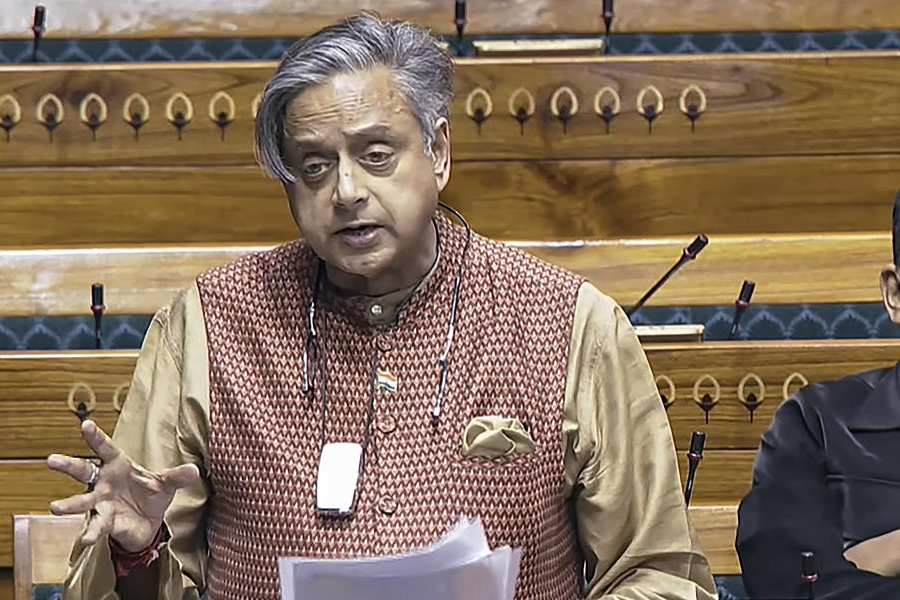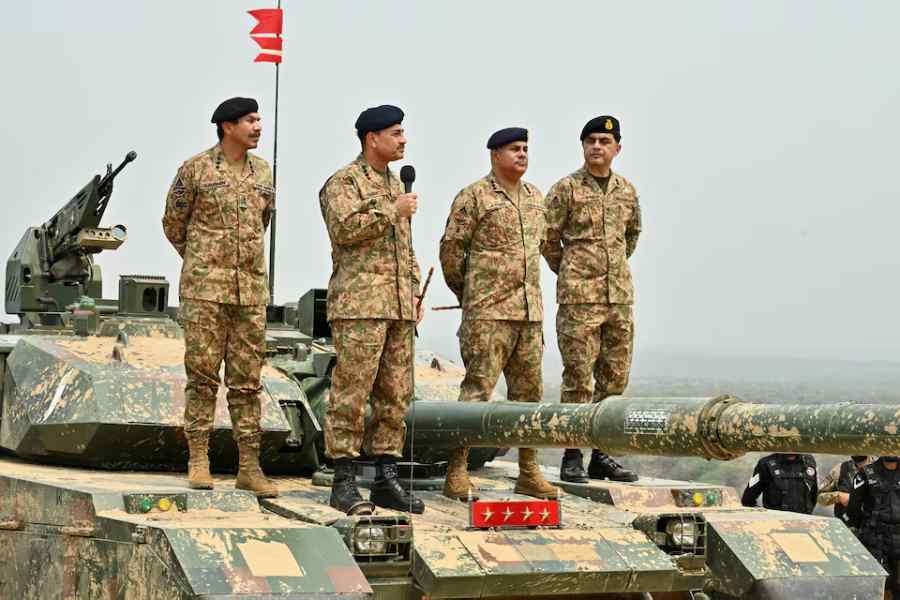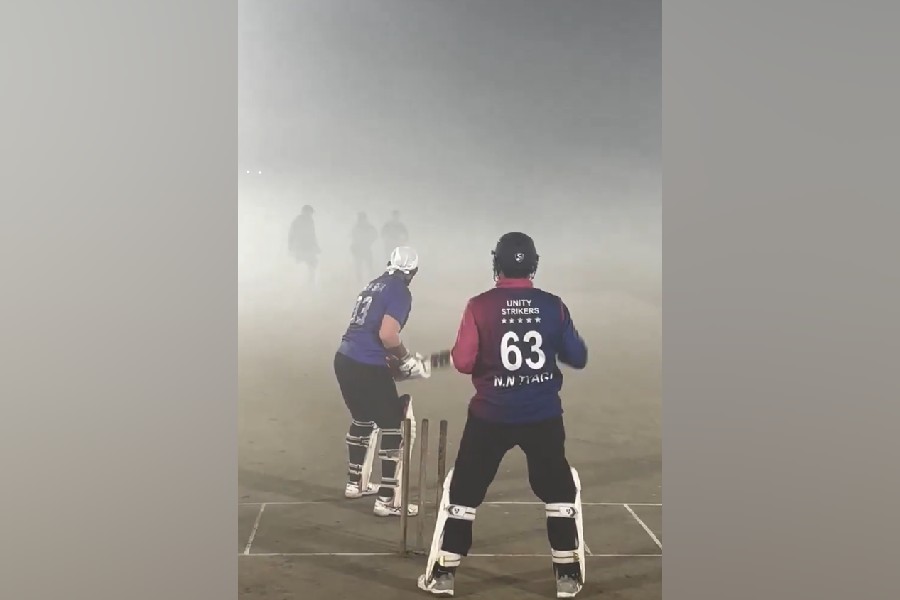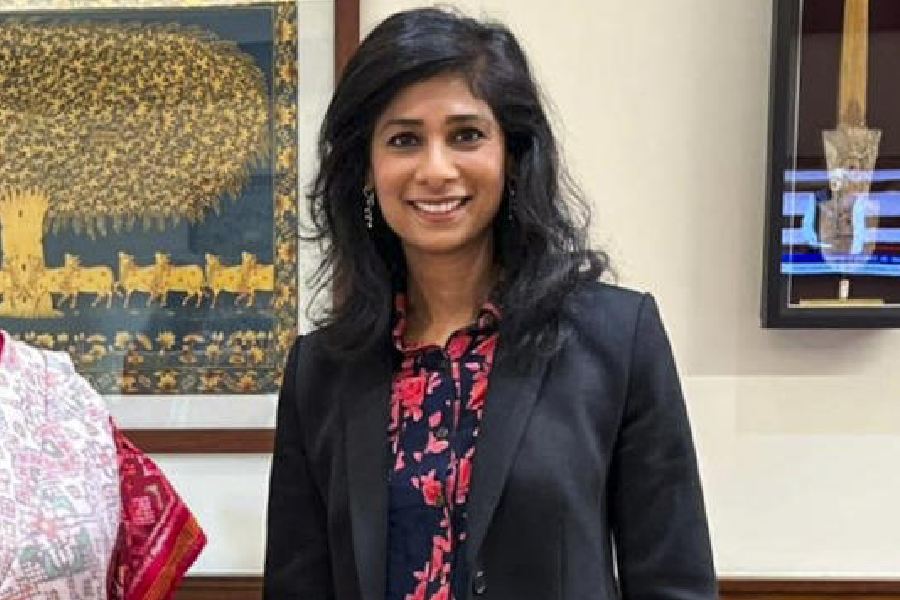 |
It is an anecdote that says it all. Way back in 1989, when Devi Lal became deputy prime minister and hurriedly got his son, Om Prakash Chautala, to replace him as the chief minister of Haryana, a journalist asked him if it was right for him to do so. “So who should I’ve made CM? Bansi Lal’s son,” he bluntly retorted, referring to his Congress archrival.
If only the choice were that easy. From Maneka Gandhi famously storming out of Indira Gandhi’s residence in 1981 on being denied late Sanjay Gandhi’s mantle to the recent violence involving Dravida Munnetra Kazhagam (DMK) factions, patriarchs — and one matriarch — of India’s political dynasties are caught in family squabbles over political legacy. Consider this:
Supporters of DMK chief M. Karunanidhi’s elder son M.K. Azhagiri attacked the office of the Dinakaran newspaper because it had carried an opinion poll projecting Karunanidhi’s younger son, M.K. Stalin, as his likely successor. The internal war extended to Karunanidhi’s grand-nephews, the Marans, leading to the ouster of Dayanidhi Maran, whose brother owns Dinakaran, from the Union Cabinet.
Whispers about tensions between the Gandhi family siblings, Rahul and Priyanka, refuse to go away. A Congress minister points out that Priyanka’s recent statement that she be called Vadra, not Gandhi, and entering the Uttar Pradesh poll campaign late can be interpreted as an attempt to carve her own identity in politics. It stemmed from anger and anguish at being denied her due, says an opposition leader.
 |
| FAMILY FEUD: Bal Thackeray’s son Uddhav and nephew Raj had both lain claim to the Sena chief’s mantle |
Last year, Shiv Sena supremo Balasaheb Thackeray looked on as nephew Raj Thackeray floated his own party — the Maharashtra Navnirman Sena — after being sidelined in favour of Balasaheb’s son, Uddhav. A senior Maharashtra politician says Balasaheb tried to avoid the split, but couldn’t reconcile the ambitions of his son and nephew.
Managing political succession when there’s more than one claimant is clearly not as easy as creating a dynasty. Political families seem to be rivalling business families in bitter succession conflicts, though they don’t end up in court. That’s because political legacies, points out Yogendra Yadav of the Centre for the Study of Developing Societies, cannot be divided the way business empires can be. “Politics is a zero sum game. You either have all or nothing.” Barring that, there isn’t much of a difference, says political commentator Cho Ramaswamy, “Politics is also becoming a commercial enterprise.”
Bharatiya Janata Party’s Sushma Swaraj cannot understand the fuss. “Succession battles and palace intrigues are part of any dynasty. Why expect dynasties in a democracy to be any different?”
Telugu Desam Party (TDP) founder N.T. Rama Rao (NTR) was probably the only supremo who never bothered about a succession plan. “NTR,” says a former TDP leader, “had an ‘after me, the deluge’ attitude. All he wanted was help in running the party while he was alive.” Most other dynasty heads, however, have a succession plan involving, as Swaraj sneers, “always the son, especially the eldest, and never the daughter.”
The daughter does figure, but usually when there is no son. Sharad Pawar’s nephew Ajit Pawar, who was widely seen as his successor, reportedly resents cousin Supriya Sule’s induction into the Nationalist Congress Party (NCP).
On some rare occasions, political parties witness the rise of a daughter-in-law or a grand-daughter. In Haryana, late Bansi Lal’s elder son, Ranbir Mohindra, is battling sister-in-law Kiran Choudhury, widow of Surendra Singh (Bansi Lal’s favourite son and his political heir) over both family property and political legacy. Bansi Lal’s act of publicly tying a turban on Shruti Choudhury, Surendra’s daughter, indicating she was the heir, also helped in widening the rift in the family.
The decision on whom to anoint is usually a well thought out one. “These are not casual decisions, though succession takes place in a way that’s completely personalised,” notes Yadav. The eldest is preferred, but never at the expense of ability. “The chosen one must have charisma or political acumen,” says Congress leader Digvijay Singh.
Devi Lal chose Chautala over his other sons — Ranjit Singh and Pratap Singh — not just because he was the eldest and his favourite but also because of his political acumen, acknowledged even by his political rivals.
In the DMK, too, Stalin is seen as the natural inheritor. Ramaswamy says that Karunanidhi’s eldest son (from his first wife), M.K. Muthu, was always a problem child (he’s now with the AIADMK), though Karunanidhi did try to prop him up to cut to size his rival, AIADMK founder M.G. Ramachandran. Stalin entered politics in his teens and was arrested during the Emergency. Azhagiri, on the other hand, developed political ambitions much later. “Nobody, not even Azhagiri, thought he could be the successor,” says Ramaswamy.
NTR chose his son-in-law N. Chandrababu Naidu as his right-hand man because of his ability to manage the organisation. His sons, says his former confidant, never measured up, always having lived in NTR’s 70 mm shadow. It’s another matter that NTR couldn’t handle Naidu’s overweening ambition and a distance emerged between the two. NTR’s second wife Lakshmi Parvathi stepped into this vacuum, prompting NTR’s family to close ranks behind Naidu who ousted his father-in-law as chief minister in 1995.
Perhaps that is why in both the Shiv Sena and the NCP offspring (Uddhav and Supriya) were preferred over nephews. Both Raj Thackeray and Ajit Pawar had been in the party longer than their respective cousins and were acknowledged as the better politicians. Sharad Pawar, says a senior Maharashtra politician, was insecure about his protégé upstaging him. He had the feeling that Ajit was beginning to take decisions on his own. “It is only the daughter in whom he can have complete trust.”
 |
 |
| Battle of the Bahus: Sonia Gandhi (top) and Maneka Gandhi |
Anointing children and grooming them is easy. Ensuring smooth succession for them isn’t. Devi Lal’s disgruntled sons sniped at Chautala but couldn’t harm him or the party. “Popular support is usually with the person who is seen to have the blessings of a popular leader,” says Swaraj. That is what is behind Sonia Gandhi’s success, while Maneka has to struggle harder for less.
But it isn’t always that simple.
Thackeray tried dividing responsibilities between Raj and Uddhav on geographical lines. While Uddhav got the southern and eastern parts of Maharashtra, Raj got the north and the west, where the party was weaker. Karunanidhi gave Azhagiri total control of Tamil Nadu’s southern districts and groomed Stalin for government. The brothers, says political scientist M.S.S. Pandian, were reconciled to this division. Not so Raj Thackeray, who saw the division of responsibilities as an attempt to marginalise him.
Other families have tried to avoid sibling fights by dividing responsibilities between the Centre and the state. Madhya Pradesh’s first chief minister, Ravi Shankar Shukla, did that with his sons — S.C. Shukla for the state and V.C. Shukla for the Centre. Pawar has eased his daughter’s entry by getting her into the Rajya Sabha, so that there’s no run-in with cousin Ajit too early. Chautala has done the same with his two sons — Ajay for the Centre and Abhay for the state.
It doesn’t always work, though. “The state is where the power is. The arrangement will work only if one child is content to remain at the Centre,” says Swaraj. There was always tension between the Shukla brothers, though it was never open or bitter. Karunanidhi thought he could keep peace within the family by letting the Maran family (late Murasoli Maran is his nephew) be the DMK’s face at the Centre while keeping the state for his sons. “The senior Maran was content with this arrangement,” says Ramaswamy, “but Karunanidhi underestimated Dayanidhi’s ambitions.” That’s perhaps why Karunanidhi is reportedly bringing his daughter, Kanimozhi, into Rajya Sabha as the family’s Delhi representative.
It’s only in Haryana leader Bhajan Lal’s family that the arrangement seems to be working — so far, that is. Elder son Chandra Mohan is deputy chief minister in the state while the younger, Kuldip Bishnoi, is a Member of Parliament. No one’s betting on this arrangement being successful. Though differences are not out in the open, the low-profile Chandra Mohan, they say, resents the ambitious Bishnoi’s grandstanding on special economic zones, which got him suspended from the Congress.
Peace lasts only as long as the patriarch is alive — as the numerous instances of widows battling stepsons or brothers-in-law demonstrate. “You can’t have a process that is dissension free. Dissension shows there is more than one player. That is the essence of politics,” says Pandian. Watch out, then, for the next feud.











